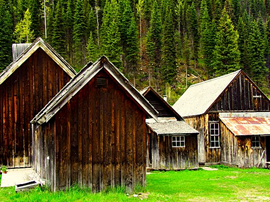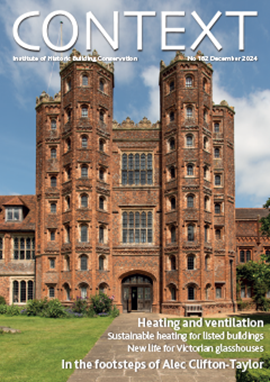Construction History Vol 36, No 2, 2021
Construction History (Vol 36, No 2, 2021) presents its usual international outlook. Two papers may be of particular interest. We tend to think of the conservation of buildings as completed without necessarily thinking about how they were originally assembled. A paper by Stefan M Holzer examines the role of the temporary works needed for medieval construction through to the early industrial period, with particular reference to methods of scaffolding, the use of cranes, and the materials and structures that were in operation on these early sites.
Holzer highlights the close interdependencies between scaffolding, lifting machines and material types on the historic construction site. When in the middle ages cranes played a subordinate role, most of the transport of building materials had to be by carriers, who required convenient sound and stable scaffolding (mostly pole scaffolding) to serve the masons just in time. The progress in lifting machinery, notably from the late 14th century onwards, alleviated the pressure on scaffolds, and may have permitted the use of lighter or more basic scaffolding, while big ashlar blocks were assembled directly from the cranes. The development of robust rotative cranes spurred this development, and the rediscovery of the Vitruvian gin pole had the same effect.
The second paper, by Keith Parry, deals with the repair and maintenance of the wooden bridge over the Thames at Marlow between 1620 and 1820. The bridge was set on a series of wooden piles grouped in ranges, linked together by wooden joints. It was typical of many bridges spanning the Thames between Reading and London. Rents from the Bridge Estate funded the repairs and two bridgemasters recorded their income and expenditure over two centuries. This permits analysis of records that show that the cycles of bridge closure of repair and replacement by a ferry averaged 11 years.
Also of note in this issue are articles about the construction of the city wall at Pompeii; brickmaking production in medieval Novgorod; a history of early reinforced concrete in modern Shanghai (1890–1914); and the spreading regional development of the railway system in São Paulo, Brazil.
This article originally appeared in the Institute of Historic Building Conservation’s (IHBC’s) Context 172, published in June 2022. It was written by Bob Kindred MBE.
--Institute of Historic Building Conservation
Related articles on Designing Buildings
IHBC NewsBlog
200th Anniversary Celebration of the Modern Railway Planned
The Stockton & Darlington Railway opened on September 27, 1825.
Competence Framework Launched for Sustainability in the Built Environment
The Construction Industry Council (CIC) and the Edge have jointly published the framework.
Historic England Launches Wellbeing Strategy for Heritage
Whether through visiting, volunteering, learning or creative practice, engaging with heritage can strengthen confidence, resilience, hope and social connections.
National Trust for Canada’s Review of 2024
Great Saves & Worst Losses Highlighted
IHBC's SelfStarter Website Undergoes Refresh
New updates and resources for emerging conservation professionals.
‘Behind the Scenes’ podcast on St. Pauls Cathedral Published
Experience the inside track on one of the world’s best known places of worship and visitor attractions.
National Audit Office (NAO) says Government building maintenance backlog is at least £49 billion
The public spending watchdog will need to consider the best way to manage its assets to bring property condition to a satisfactory level.
IHBC Publishes C182 focused on Heating and Ventilation
The latest issue of Context explores sustainable heating for listed buildings and more.
Notre-Dame Cathedral of Paris reopening: 7-8 December
The reopening is in time for Christmas 2025.
Stirling Prize-winning Salford building to be demolished
The Centenary Building will be bulldozed as part of the wider £2.5bn Crescent regeneration project.

















